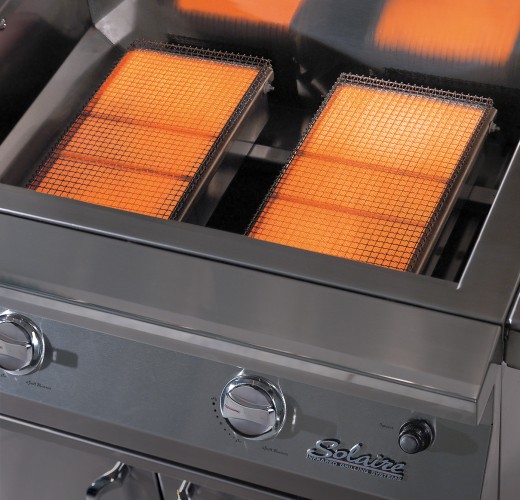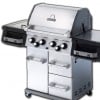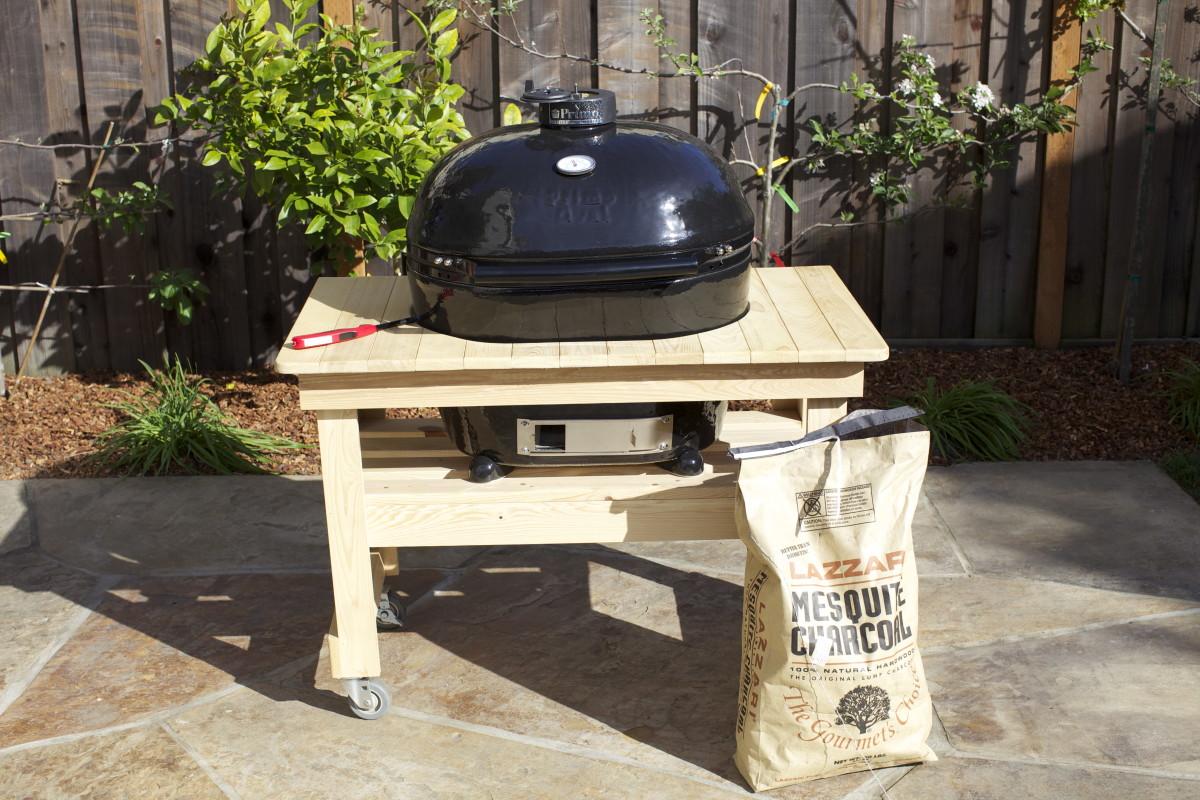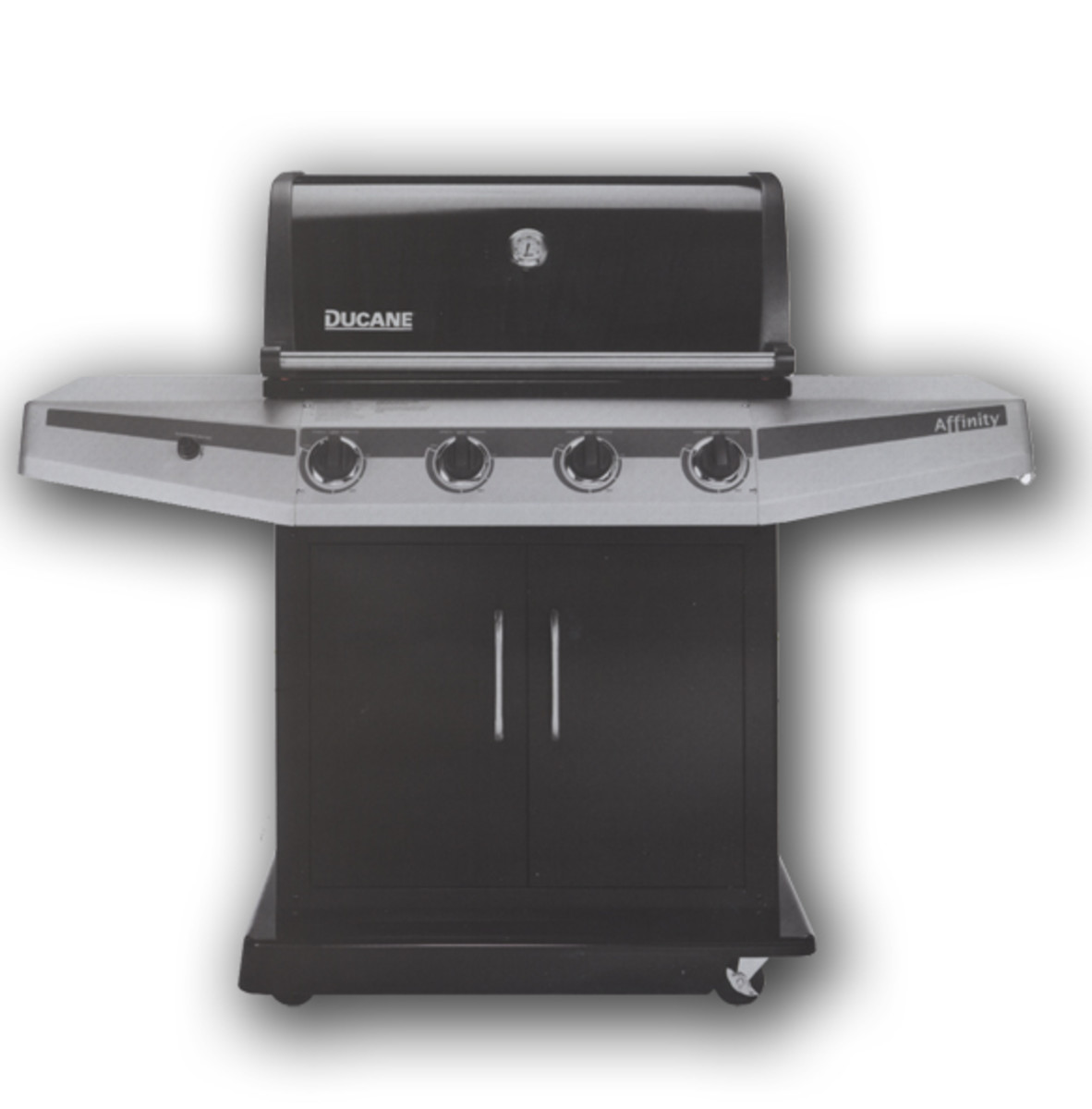TEC -- Thermal Engineering Corporation -- Infrared Gas Grills and The TEC Infrared Burner Design.
TEC infrared gas grills
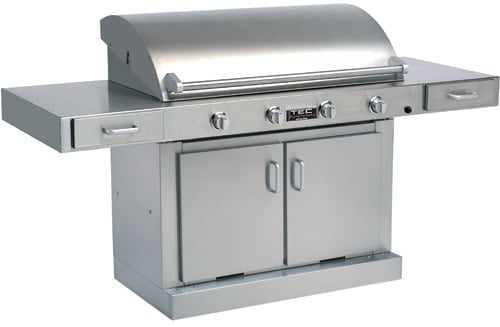
TEC infrared gas grill burner.
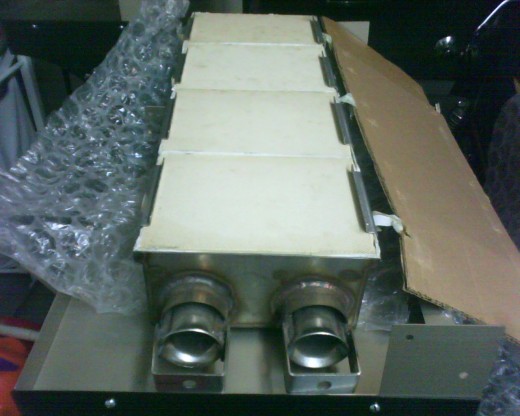
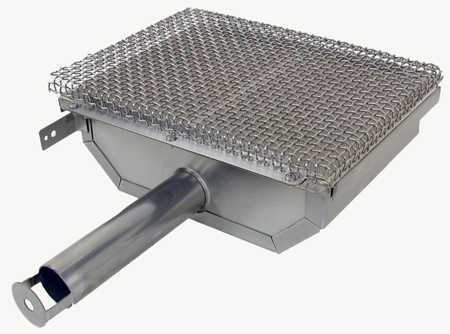
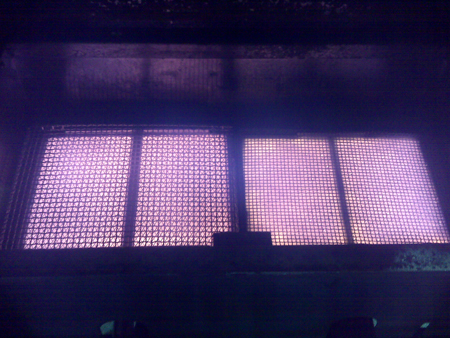
Infrared Gas Grilling.
TEC infrared grill burners changed gas barbeque grilling as we know it. Infrared grilling is the process of heating ceramic tiles with natural gas or propane until they begin to emulate thermal radiation that in turn will cook food at a hotter temperature. Unlike a barbeque grill, the infrared grill can reach temperatures of 1000 degrees or more. This process allows food to be seared, which locks in the juices that are lost while barbequing at lower temperatures and is the main cause of dry meat.
While most barbeques rely on the use of heated air to barbecue, the infrared grill radiates and cooks the food directly. The entire process is faster, food is cooked faster and an infrared burner will reach 1000 degrees with only a few minutes of warm up time.
With an infrared grill, the heating surface remains heated uniformly. No matter where you place your food the temperature will be the same as any other location. Gas and charcoal barbeques tend to be hotter where flames are present and cooler where flames are not directly below. This is a design flaw with many manufacturers because the barbeque is made to cook with the trapped air under the closed hood. The BBQ is not able to cook with the hood open because the burners do not produce enough heat. In the pouring rain you are unable to use a barbeque because the rain will put out the coals. Strong winds push air from under the hood, lowering the temperature. With an infrared grill you can cook in the hot summer heat, the cold snow of winter and the heavy rains in between. Not even the wind will stop the power of these grills. In fact many custom boat manufacturers buy infrared grills for use on the ocean where winds are much stronger and cooler than our backyard.
The mess associated with an infrared grill is minimal compared to other grills. With the infrared grill, a user only has to wipe it down to clean it. With traditional barbeques a user needs to empty out coals and do a labor intensive cleaning before each use. When food cooks slower (less than 800 degrees) moisture drips and causes flare-ups at the burner. Flare-ups create a mess and cause uneven heat. With briquettes the grease that drips from your food can build up and create a fire after a year of barbecuing. I have had barbeques that were shut off and continued to burn for up to an hour because of grease build-ups. I have also had customers call us with rodent problems because of grease build-up in their barbeque.
Tec Infrared grill replacement parts
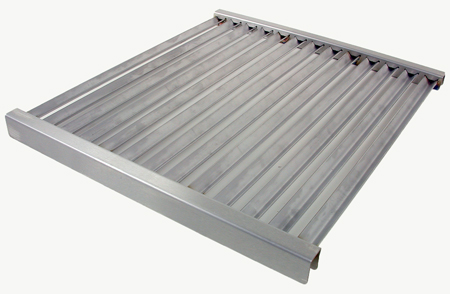
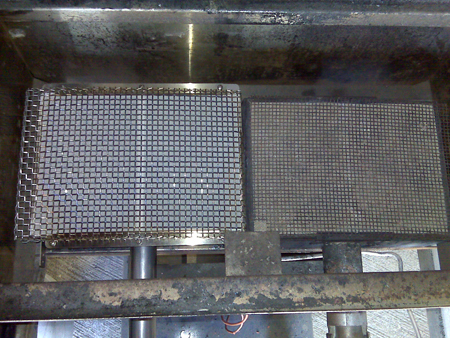
In 1980 the original infrared grill was released by Thermal Engineering Corporation. Upon its release TEC had the chance to continue to grow on this basic prototype, as they were backed with a patent that covered them for 20 years.
The first model designed was very basic. It used the heat of a series of small flames to heat the ceramic plates. While these plates delivered some infrared radiated heat for cooking, there were still flames present and the food was cooked by both means. The ceramic used also had protection issues, and methods of removing the food from them sometimes caused damage. But the technology still was far more advanced than traditional barbequing since there was only a minor chance of a flare-up occurring.
Restaurants and high-end steak houses were the first major customers of this new technology. Previously a thick slab of cast iron was used to get a perfect sear on red meat and seafood. A cast iron griddle would be left in the oven for several hours so that by time of the dinner rush the cast iron griddle would be radiating 1200 degrees. A steak laid on the iron for 20 seconds and then flipped was perfectly sealed from the outside and ready to be served as Pittsburg seared rare. For a medium or medium rare steak the meat would be placed on another plate and left in the oven for a few minutes to heat the inside of the food. Infrared grills – even this first iteration – were much quicker and more efficient.
What followed in the evolution process were the glass infrared grills. While they remained similar to the previous model, the new technology simply added a glass pane between the ceramics and the food. This almost completely prevented the heated air to reach the food, and enclosed the flames so only the radiant heat would cook the meat. This resulted in tender and juicer foods being cooked, and the glass protecting the ceramics made the cleanup easier and more effective.
Finally, in the new generation of infrared grills, all the rules changed. Layers of metal were added to help produce the infrared energy now used to cook the meats. Better formed glass panels are placed over the burners preventing air flow in the grill. All the components on the interior are also setup to produce a uniform heating element, while eliminating the flare-ups that were once possible. The new TEC infrared grills do not use a pressurized housing at all. A burner similar to a pipe burner mounts below a stainless steel heat plate bent at a parabolic curve to magnify the heat radiating from the stainless plate. No flame are anywhere near the food grilled but the heat that radiates from the stainless steel is as intense as the original pressurized burners.
Infrared Grills deliver a better experience than a traditional BBQ on many different levels. Many of the annoyances that people encountered with charcoal are eliminated with the new technique.
TEC infrared gas grills use less fuel compared to a traditional barbeque, have faster heating times (these grills can fully heat in 3 minutes!), food is seared to lock in juicy flavors and uniform distribution ensures a perfect seal. Because of the high temperatures and the quality of manufacturing infrared grills – both those designed by TEC and the Solaire and Alfresco models that followed within the patented period – are much easier to clean and maintain than traditional convection barbecues.
When you are barbequing traditionally, it can take you up to thirty minutes to properly heat the grill. During that time you may have to relight the grill several times and the flame may continue to go out during cooking. Traditional barbequing also leads to a build up of carcinogens in meat. This is due to the blackening caused by the flames on the grill or cheap quality of charcoal. With an infrared grill you don't have the direct contact with the flames, which reduces the carcinogens that might end up in your meal and the near-instant seal locks good stuff in and bad stuff out.
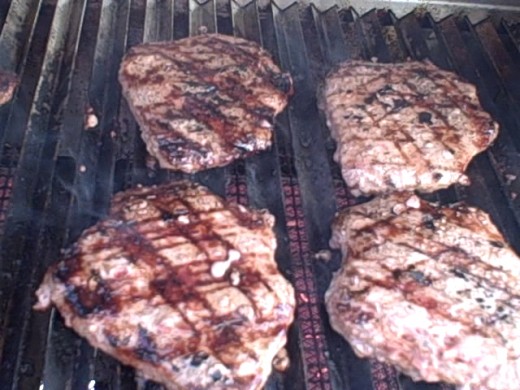
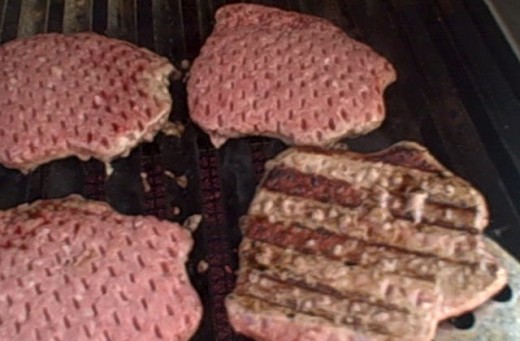
Due to the technology and time it takes to build each infrared grill their price is significantly higher than a traditional grill. The cost of the plates and quality 304 stainless steel also increase the price. But while American made infrared grills may be a little pricier they are warrantied for life and product the flavor that a high-end steakhouse will charge $80. per steak. Less food will potentially be lost during the cooking process because of the uniform cooking. This means that less food is wasted because of it being dried out, or burned during the cooking process. There will be less consumption of fuel so in time you actually start to save money on gas. While the initial cost might startle you, depending on how often you use a grill it can start to save you considerable amounts of money – especially if your are buying cheap grills every to years.
Infrared grills also save time. While you need to heat up a barbeque and then watch is every so often and make sure it is working, with an infrared grill that is no longer the case. With a quicker ignition and heating process, you can be grilling your steaks and done in a matter of minutes. I light my grill when I am ready to eat not an hour beforehand. Infrared grills also cool down much faster. While a traditional barbeque can take over an hour to cool down, an infrared gas grill will cool down much faster because air, lava rocks, rods or briquettes are not holding/conducting heat to reach grilling temperatures. The radiant heat is direct so on “High” it gets hot and when “Off” it is cool. This makes them safer if there are small children in the household, as there is less chance of them being burned in the process.
With the amount of money and time these units save, they are certainly worth the price. Plus with the safety of your family in mind, they tend to cook cleaner and cool faster giving your whole family a safer way to enjoy grilled food (with amazing flavor). In closing, when Bill Best created the Infrared Grill decades ago there was no way he could have known the well crafted and effective machines the grills have become these days. With juicier and better tasting food delivered, the world of infrared grilling is only going to get better as time progresses.
infrared burners.
